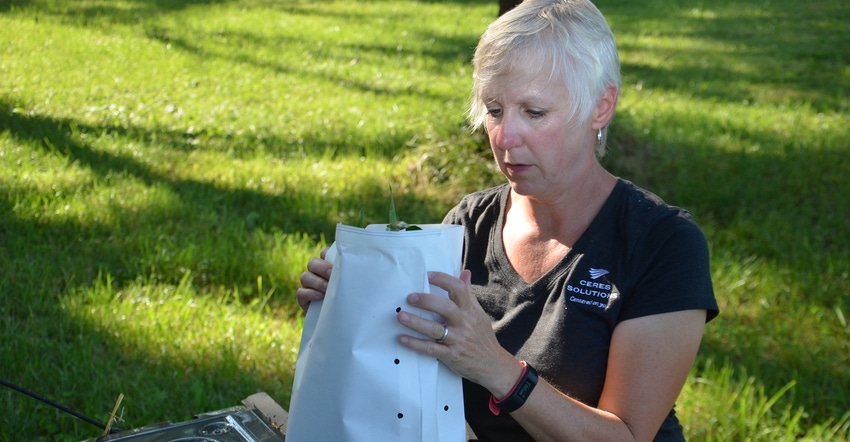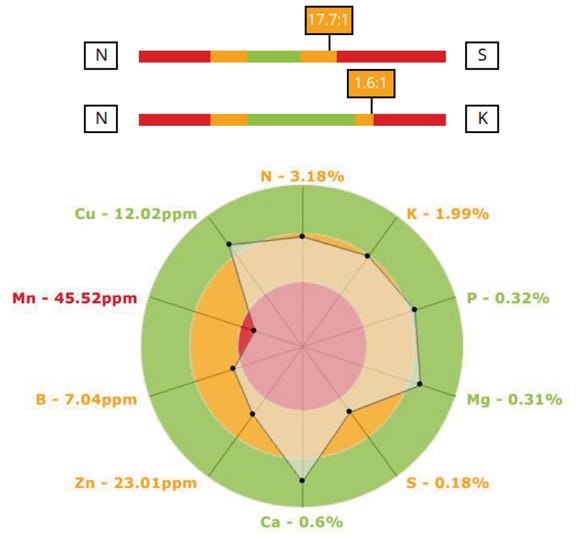
Growers who chase super high yields may pull tissue tests nearly every week during the growing season. If your goal is simply getting a handle on how your crop nutrition program is doing, pulling three times during the season should give you a good indication.
Betsy Bower of Ceres Solutions, based in west-central Indiana, volunteered to help introduce tissue testing into the Corn Watch project in 2020. She trained organizers to pull samples, provided sample bags and Ceres Solutions covered the cost of testing at Sure-tech Labs. Look for tissue testing to continue in the project in 2021.
Related: Why midseason tissue testing worth effort
Seed Genetics Direct sponsors Corn Watch ’21. The goal is to provide information learned following one field in central Indiana so you might have a better idea of what’s happening in your corn fields.
Final sampling time
Samples were pulled at the V5 stage in 2020. Zinc was borderline. Adding it might have boosted yields, even though zinc was added with the starter. At the 12-leaf stage, tissue tests showed that key nutrient levels for nitrogen and potassium were dropping, most likely because the field had just suffered through a very dry period. Rain refreshed the plants, but nutrient levels weren’t up yet when samples were taken hours after the rain.
The recommended time to take the third sample if you’re only taking three is at R1, Bower says. According to the Purdue University Corn and Soybean Field Guide, it’s just before pollination and silking. By R2, kernels have formed blisters. In the Corn Watch 2020 field, samples were pulled at R2, which is still valuable information.
When the R2 sample was pulled in 2020, under very adequate moisture conditions, both nitrogen and potassium levels had rebounded since V12. The lab report still showed them as responsive, although they were at the high end of the range.
 ENOUGH NUTRIENTS? Did the reproductive tissue sample on the 2020 Corn Watch field show that plants had enough nutrients left to finish strong?
ENOUGH NUTRIENTS? Did the reproductive tissue sample on the 2020 Corn Watch field show that plants had enough nutrients left to finish strong?

“Corn needs nitrogen the most early in the season and right before tasseling,” Bower says. “By the time you pull the sample at R2, its job is done for the most part.”
Other notes
In mid-September, just as the black layer was forming signifying physical maturity, some plants began showing initial signs of nitrogen deficiency. Symptoms begin as firing at leaf tips, which works down the midrib. A few plants were also showing potassium deficiency, showing browning around leaf margins.
“Potassium was probably a little lower than we like to see all season, and plant samples showed it,” Bower says. “Yet the crop made it to the finish line.”
In fact, despite being planted in mid-May, when weather turned cool and impacted stands, the 36-acre field yielded over 220 bushels per acre.
Boron was not deficient but fairly low by R2. “People seeing yield responses to boron are primarily on sandy soils or pushing hard for super-high yields,” Bower observes. “We’ve also seen some response to manganese in northwest and west-central Indiana recently. However, you must take care of your macronutrient needs first before worrying about micronutrients.”
About the Author(s)
You May Also Like




